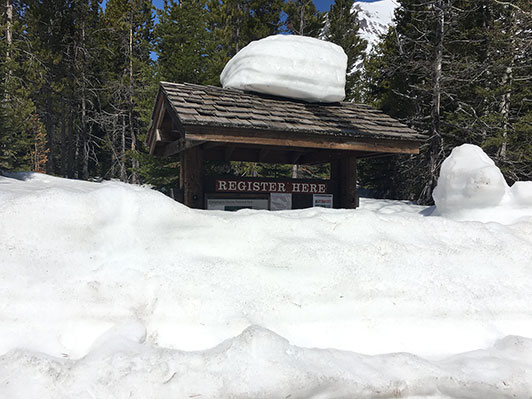Last updated: December 31, 2020
Lesson Plan
Winter-time Temps

- Grade Level:
- Upper Elementary: Third Grade through Fifth Grade
- Subject:
- Math,Science
- Lesson Duration:
- 60 Minutes
- State Standards:
- NGSS 3-LS4-4. Make a claim about the merit of a solution to a problem caused when the environment changes and the types of plants and animals that live there may change.
- Additional Standards:
- NGSS 3-LS4-3. Construct an argument with evidence that in a particular habitat some organisms can survive well, some survive less well, and some cannot survive at all. NGSS 3-LS4-4. Make a claim about the merit of a solution to a problem caused when the e
Essential Question
Why and how does temperature vary above and below the snow? How does it affect wildlife?
Objective
Students will understand temperature variations above the snow and below the snow and its affects on wildlife.
Background
Snow acts as insulation and provides an environment that has relatively stable temperatures. Small animals such as mice, voles and shrews spend most of the winter under a protective blanket of snow. Snowshoe hares, grouse and ptarmigan snuggle into the snow which provides protection from wind and temperature extremes. Large animals such as deer, elk, moose, mountain goats and bighorn sheep move to south and southwest facing slopes because they are warmer (and snow melts off more quickly making walking and locating food easier). Temperatures within a snow pack can vary depending upon the consistency of the snow. Snow consistency as well as snow depth can either assist or impede the movement of animals.
Preparation
- Thermometers (1 per team of 2 – 4 students)
- Clip boards paper and pencils
Procedure
- Place a large drawing of a thermometer on a piece of paper, cardboard, or chalkboard so students can visualize it. Be sure everyone knows how to read a thermometer.
- Divide students into teams to take and record temperatures. Be sure that all students have a chance to take some of the temperatures.
- Go outside and take temperatures at the following locations: air temperatures; temperature at surface of the snow and then several inches below the snow; on the ground on the north side of the school; on the ground on the south side of the school (if it’s a sunny day the south side temperature will be considerably warmer).
- Return to class and compare temperatures. Discuss how these temperature differences affect small and large animals.
Variations and Extensions:
Place equal amounts of water in cups with lids and bury one cup in the snow and put the other cup on the surface of the snow. Which freezes faster and why? (It is best to start with cold water in the cups and place them outside early in the day.) Check them again in the afternoon.
Assessment Materials
Have student groups prepare a graph depicting the data they collected. Have the groups present their information to the class and explain temperature variations they observed.
